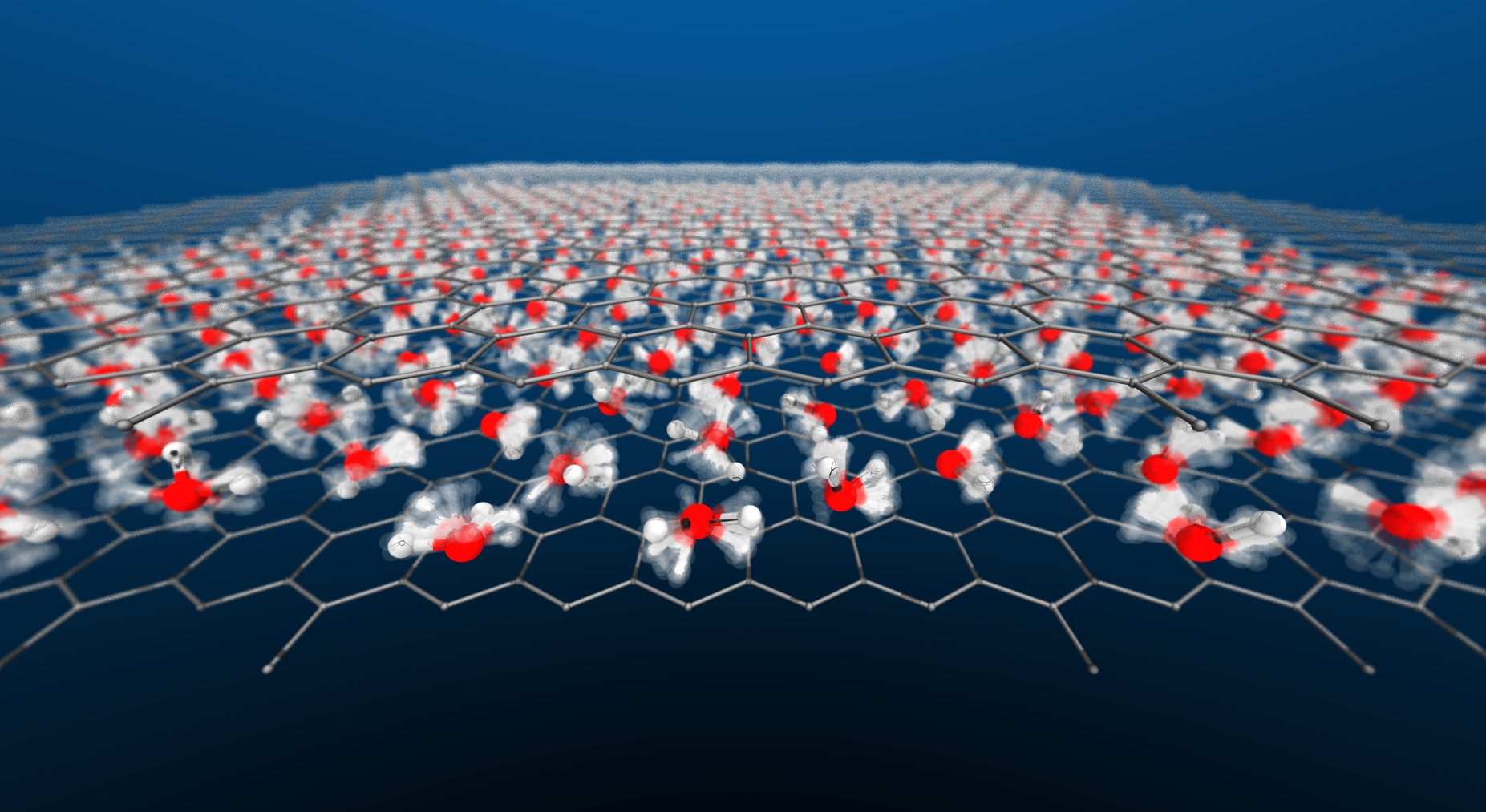materials under nano-confinement
We use first-principles level atomistic simulations to understanding how and why properties of water change when confined to cavities of nano scale dimensions.
Selected Publications
-
 The first-principles phase diagram of monolayer nanoconfined waterVenkat Kapil, Christoph Schran, Andrea Zen, and 3 more authorsJul 2022
The first-principles phase diagram of monolayer nanoconfined waterVenkat Kapil, Christoph Schran, Andrea Zen, and 3 more authorsJul 2022Water in nanoscale cavities is ubiquitous and of central importance to everyday phenomena in geology and biology. However, the properties of nanoscale water can be remarkably different from bulk, as shown e.g., by the anomalously low dielectric constant of water in nanochannels [1], near frictionless water flow [2], or the possible existence of a square ice phase [3]. Such properties suggest that nanoconfined water could be engineered for technological applications in nanouidics [4], electrolyte materials [5], and water desalination [6]. Unfortunately, challenges in experimentally characterising water on the nanoscale and the high cost of first-principles simulations have prevented the molecular level understanding required to control the behavior of water. Here we combine a range of computational approaches to enable a first-principles level investigation of a single layer of water within a graphene-like channel. We find that monolayer water exhibits surprisingly rich and diverse phase behavior that is highly sensitive to temperature and the van der Waals pressure acting within the nanochannel. In addition to multiple molecular phases with melting temperatures varying non-monotonically by over 400 degrees with pressure, we predict a hexatic phase, which is an intermediate between a solid and a liquid, and a superionic phase with a high electrical conductivity exceeding that of battery materials. Notably, this suggests that nanoconfinement could be a promising route towards superionic behavior at easily accessible conditions.
@misc{kapil_first-principles_2022, title = {The first-principles phase diagram of monolayer nanoconfined water}, doi = {10.48550/arXiv.2110.14569}, urldate = {2022-08-19}, publisher = {arXiv}, author = {Kapil, Venkat and Schran, Christoph and Zen, Andrea and Chen, Ji and Pickard, Chris J. and Michaelides, Angelos}, month = jul, year = {2022}, note = {arXiv:2110.14569 [cond-mat]}, keywords = {Condensed Matter - Materials Science, Condensed Matter - Mesoscale and Nanoscale Physics, Condensed Matter - Statistical Mechanics}, ch2o = {true}, mlps = {true}, csp = {true} }